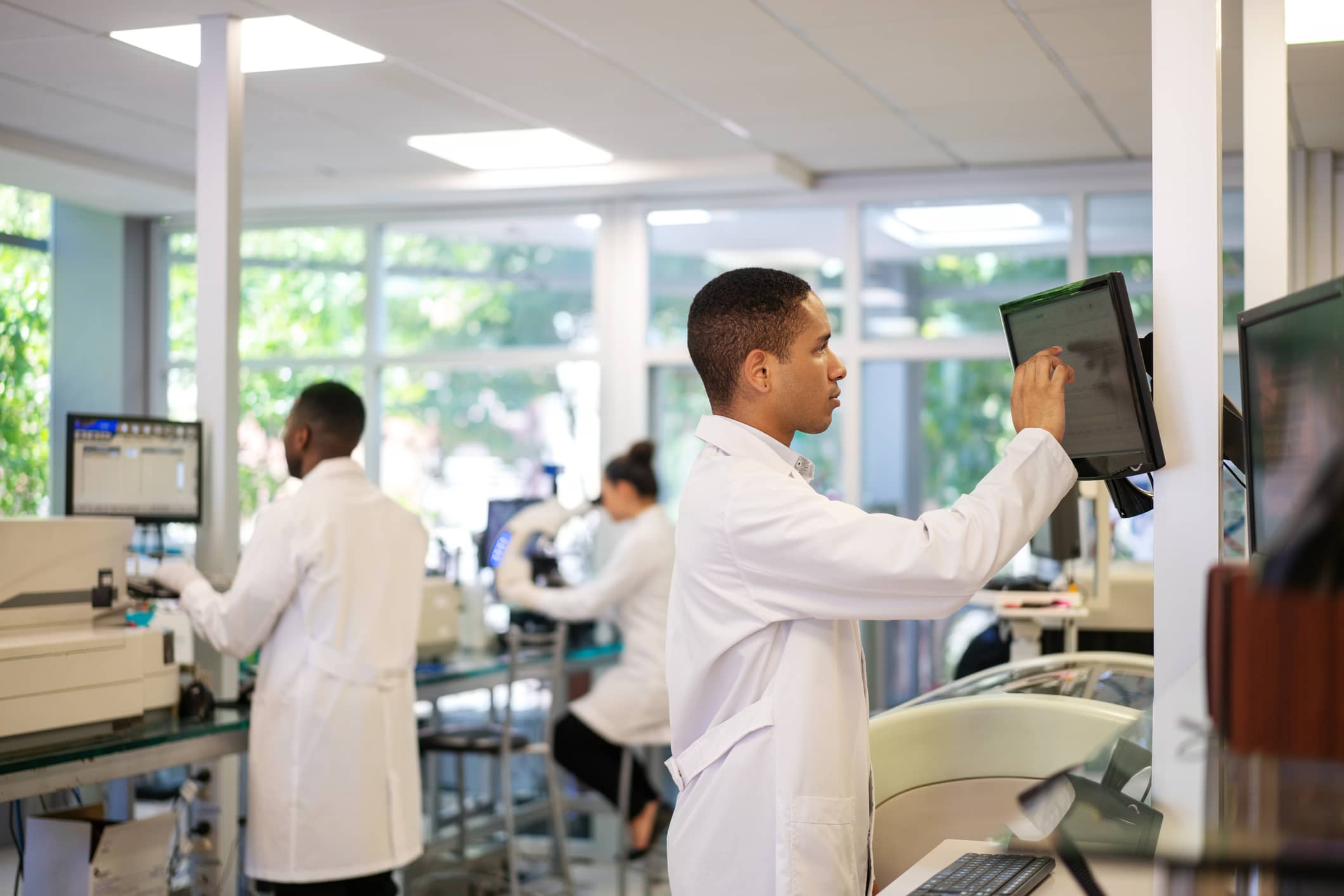
Intelligent lab digitalization, part 2: optimized implementation
In part 1 of this series, we outlined the implementation errors that caused many early 20th Century manufacturers to resist replacing steam power with electrification. Continuing the exploration, this week’s post dives into the parallels between factory electrification 100+ years ago and contemporary digital transformation. Find how the lessons learned can help you to tell whether you’re doing lab digitalization wrong and how you can optimize your digital systems through intelligent implementation.

Learning from history
Just as their forebears in the Second Industrial Revolution understood that electrification represented the next leap forward for manufacturing output, contemporary pharma and biosciences companies—who now find themselves in the midst of the Fourth Industrial Revolution—understand that the future growth of their laboratory output depends in digitalization. Also like their forebears, the path to successfully implementing the new technology is not always clear.
Those early Twentieth Century manufacturers were happy to integrate electrification into their business processes (via telegraphy, lighting, etc.) but resisted doing so in the factory setting, especially when suboptimal implementation at showcase sites had failed to produce measurable gains. That failure was due in large part to the fact that the existing factory infrastructure had been refined across the decades to harness the power generated by steam engines and simply “parachuting” in a new power source wouldn’t make the critical difference. Ultimately, that infrastructure would need to be entirely rethought to optimally accommodate the unique strengths of electric motors; hence, intelligent implementation was key to the emergence of electrified manufacturing.
Intelligent implementation
In the same vein, contemporary biopharma manufacturers have readily adopted digital systems for communication and production line management but are also often hesitant when it comes to the laboratory setting. As with the factories of a century ago, modern pharma lab infrastructure has been refined over decades to best utilize the paradigmatic way of working; historically, this has meant relying on manual operations and processes. However, with the rapidly increasing availability of digital systems designed to facilitate laboratory operations, choosing the right solution and implementing it intelligently is critical—it is no longer sufficient to parachute in a digital solution as a 1:1 replacement for existing manual processes.
An implementation case study
Allow me to illustrate with a real-world example from our archive of digital implementations: Bluecrux was contracted to deliver our Binocs digital scheduling solution to the QC teams at a large pharmaceutical site. Shortly before approaching us, the QC function had been divided into five teams, each with a dedicated Planner working 0.5FTE to manually schedule activities using Excel and manual planning boards. The organizational restructuring had taken place specifically because the QC group was too large to be manually planned by fewer than five individuals, however, when preparing to implement Binocs, the site team requested that the 5-team structure be retained. This direct, 1:1 implementation resulted in all five planners saving time—each reducing their scheduling workload to 0.2FTE—but still did not take full advantage of the power of the system’s dynamic, AI-driven algorithm. They were still dedicating significantly more time than necessary to manually editing the automated schedule to account for analysts and equipment who were being shared between the (now arbitrarily) divided teams.
After reviewing the efficacy of the implementation and delivering some change management activities, the site agreed to reconsider how its teams were organized, permitting them to use just three teams and three Planners, one for each of its discrete QC laboratories. In this way, the client not only reduced the number of people dedicating time to planning but they also further reduced the amount of time each was spending on the schedule by allowing the scheduling algorithm to function optimally, thus resulting in fewer manual edits and recalculations. Binocs reduced the total labor cost for planning activities across the client’s QC lab function from 2.5FTE to 1FTE when sub-optimally implemented, however, by implementing intelligently and changing the way of working to one better suited to digital scheduling, this saving was extended to just 0.3FTE.
Towards the lab of the future
The above example represents just one type of change that should be considered when implementing any digital system. Biopharma companies understand that the digital revolution is unavoidable, however, it is imperative that the decision makers responsible for introducing digital solutions to laboratory settings take the time to review their strengths and how they can be used to enhance operations. It’s not enough to simply implement such systems as a box-ticking exercise—labs cannot just replace their manual (steam-powered) processes with digital (electrified) alternatives, they must also adapt to the wider range of benefits those alternatives offer.
The factory owners of the past discovered that the shift in mindset towards the intelligent implementation of electrification would come with significant upfront costs—the entire layout of their factories would need to be redesigned; the driving principles behind their established ways of working would need to be completely reconsidered; staff would have to be retrained to use electrically-powered machines; and, without constantly-powered machines requiring round the clock operation and maintenance, labor practices would also need to be reviewed. Similar investments will inevitably be required to get the most out of the digitalized lab of the future but, approached with an open mind and with sufficient forethought, they should rapidly pave the way to even greater enhancements.
Want to learn more about how Bluecrux’s extensive pedigree of digital implementations and change management support can apply intelligent implementation to your scheduling digital transformation? Reach out for a chat!
Let’s grab a coffee!
Reach outCheck out some related blog posts!
-
During my career as head of an analytical lab, I was fortunate to oversee the work of some top-class lab planners. Back then they were planning their lab schedules…Read more
-
Don’t let your digital transformation journey cause digital anxiety
Trying to avoid digital anxiety? Check out some practical and proven tips on how digital transformation can restore stability to your team.Read more -
“Industry 5.0” explained in 800 words
We’ve barely started to understand the scope of the Fourth Industrial Revolution and some institutions are already heralding the dawn of the Fifth! So, if your head is spinning…Read more
Adam Lester-George
Adam has two decades of experience working in clinical trials, biomedical research, public health, and health economics, with a particular interest in the intersection between technology and life sciences. For 7 years before joining Bluecrux in 2019, Adam was the director of healthcare innovation consultancy “LeLan” and brings a wide range of insights to his role as Content Specialist for Binocs.






